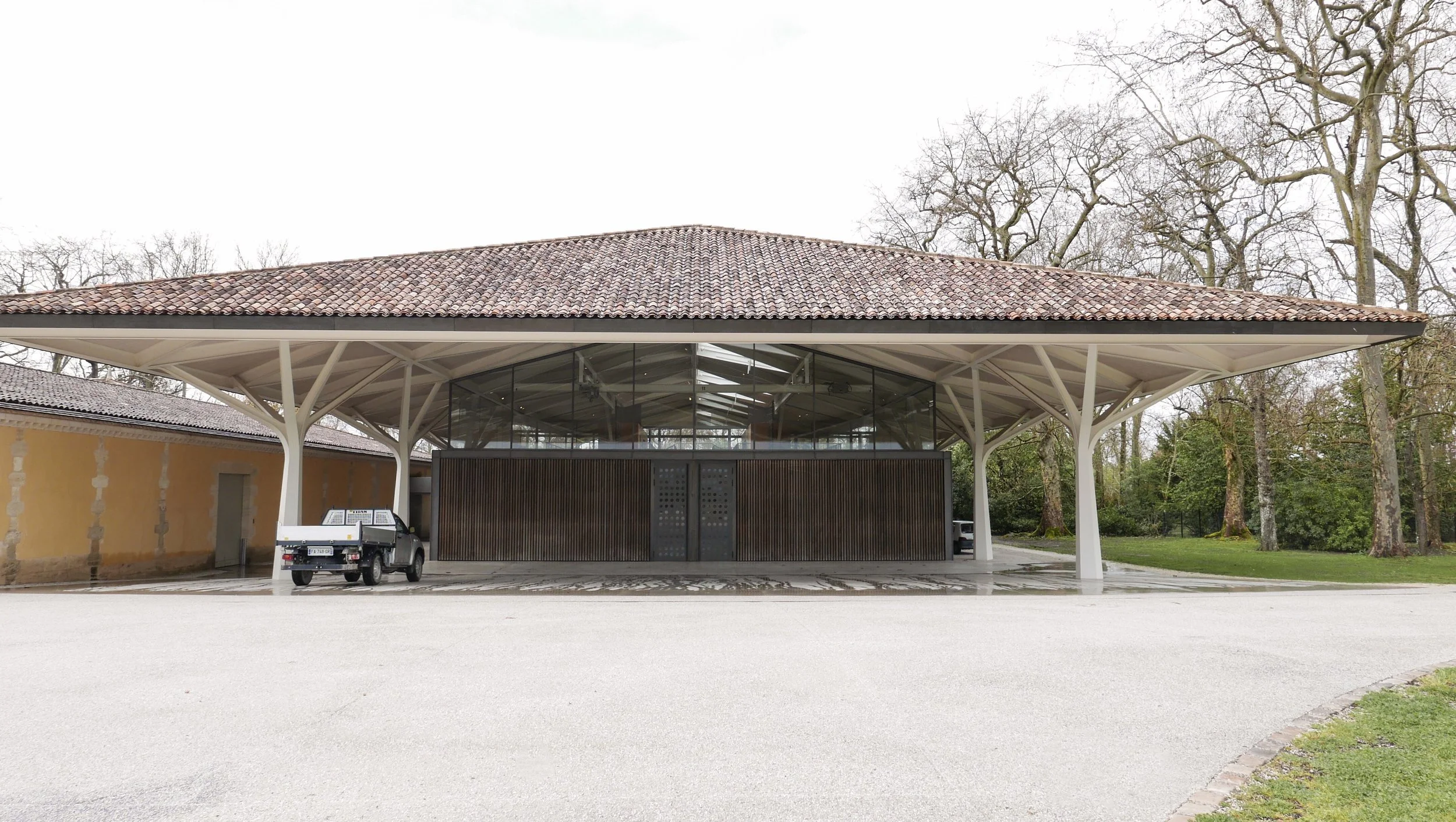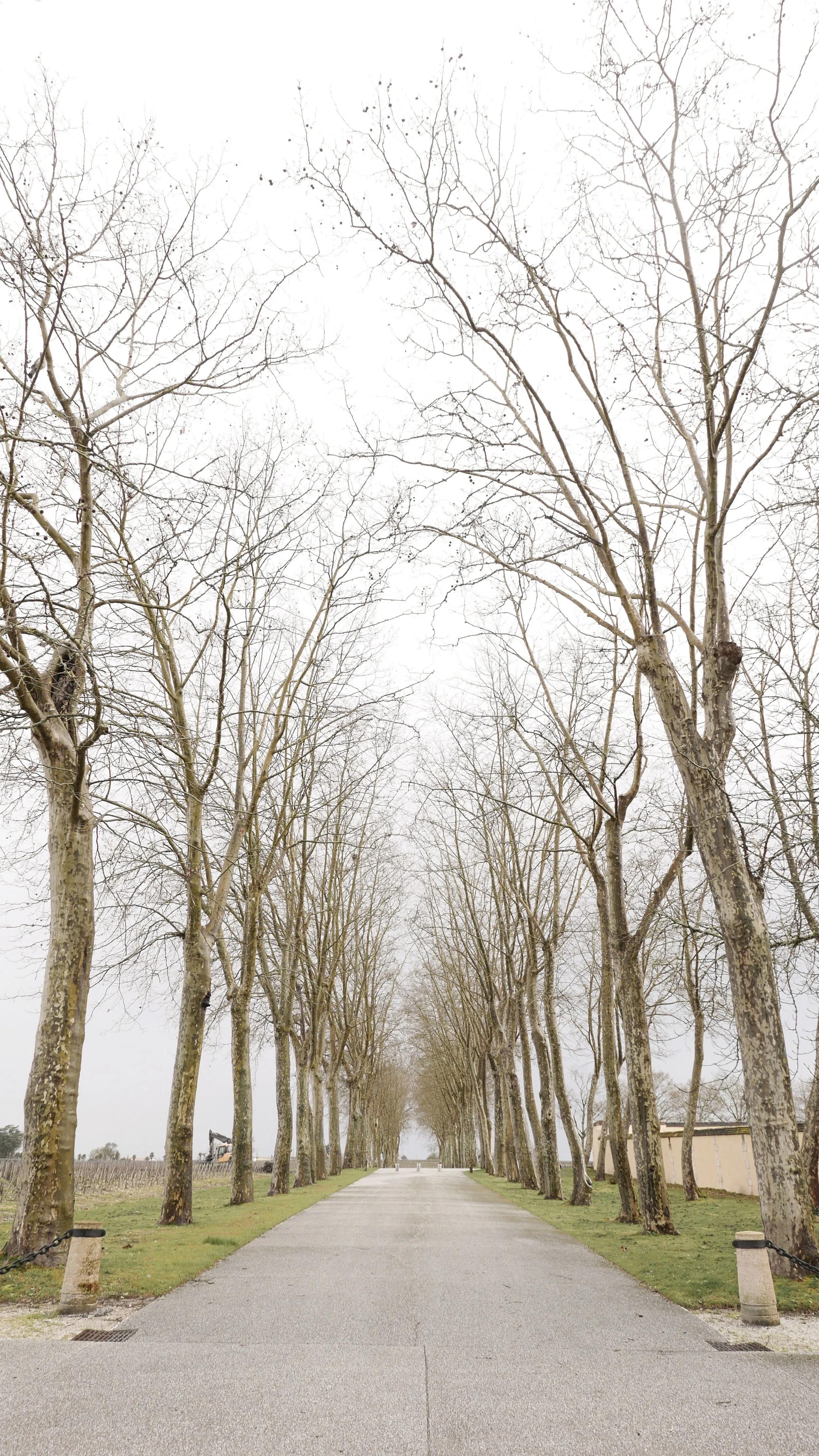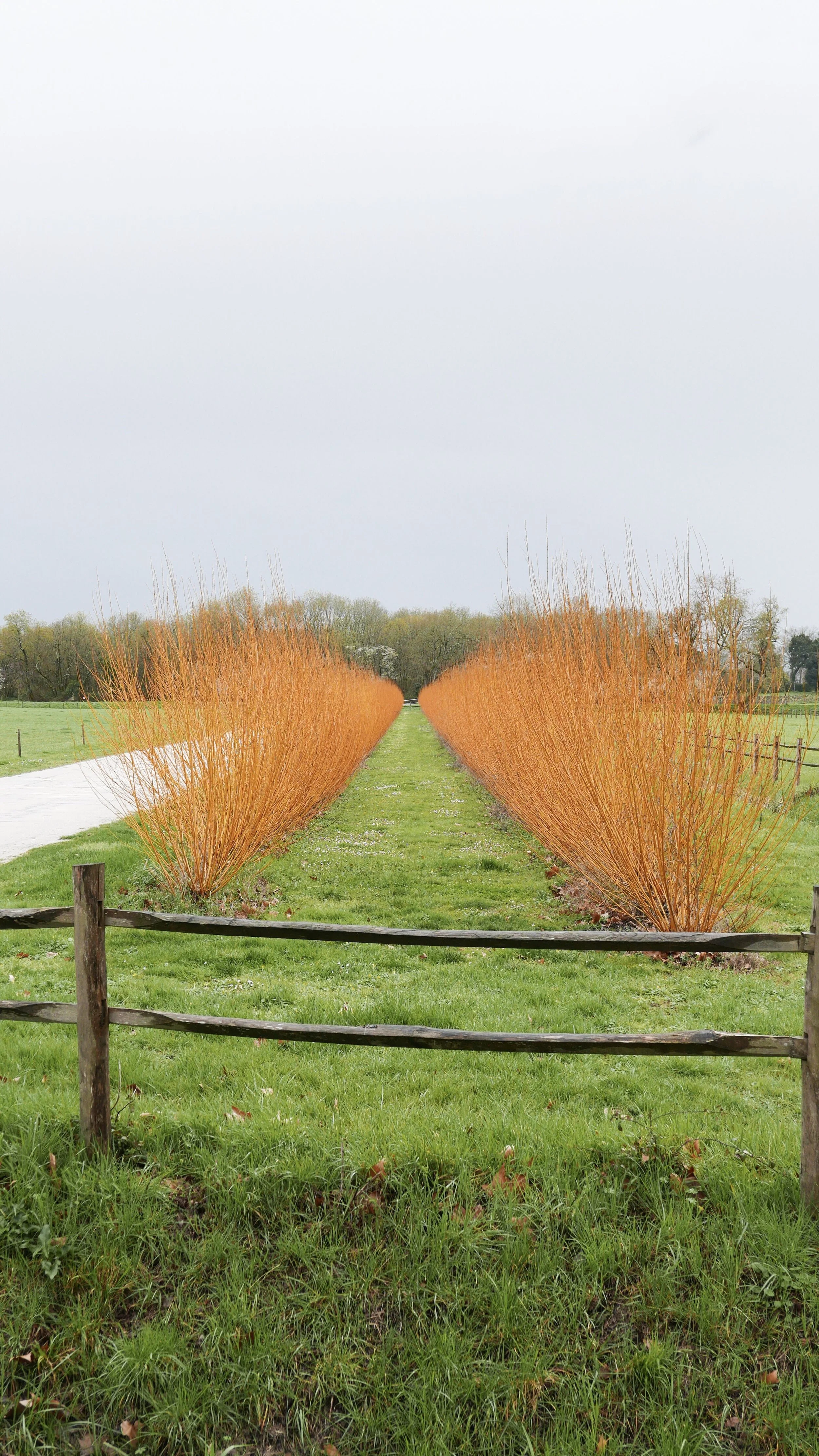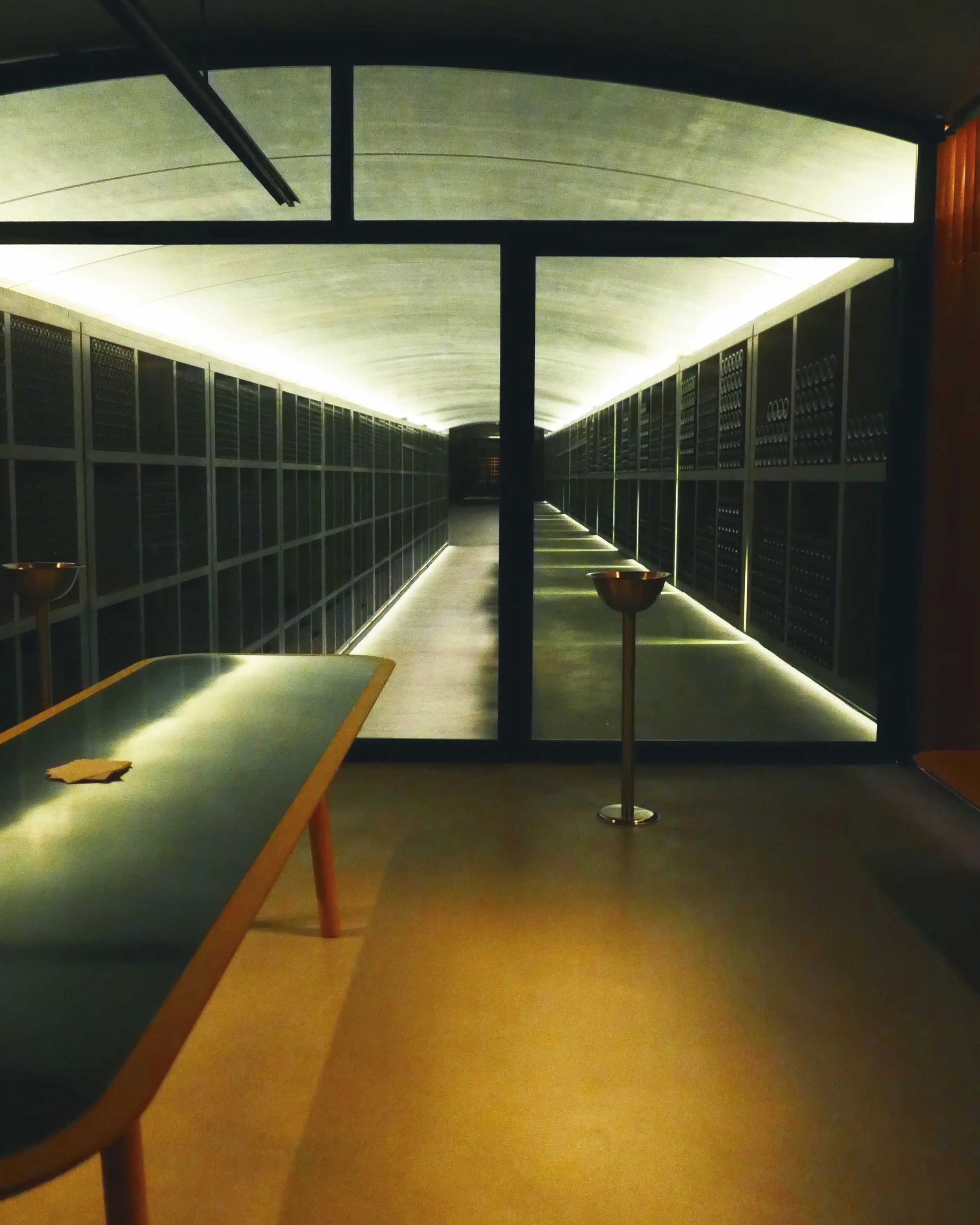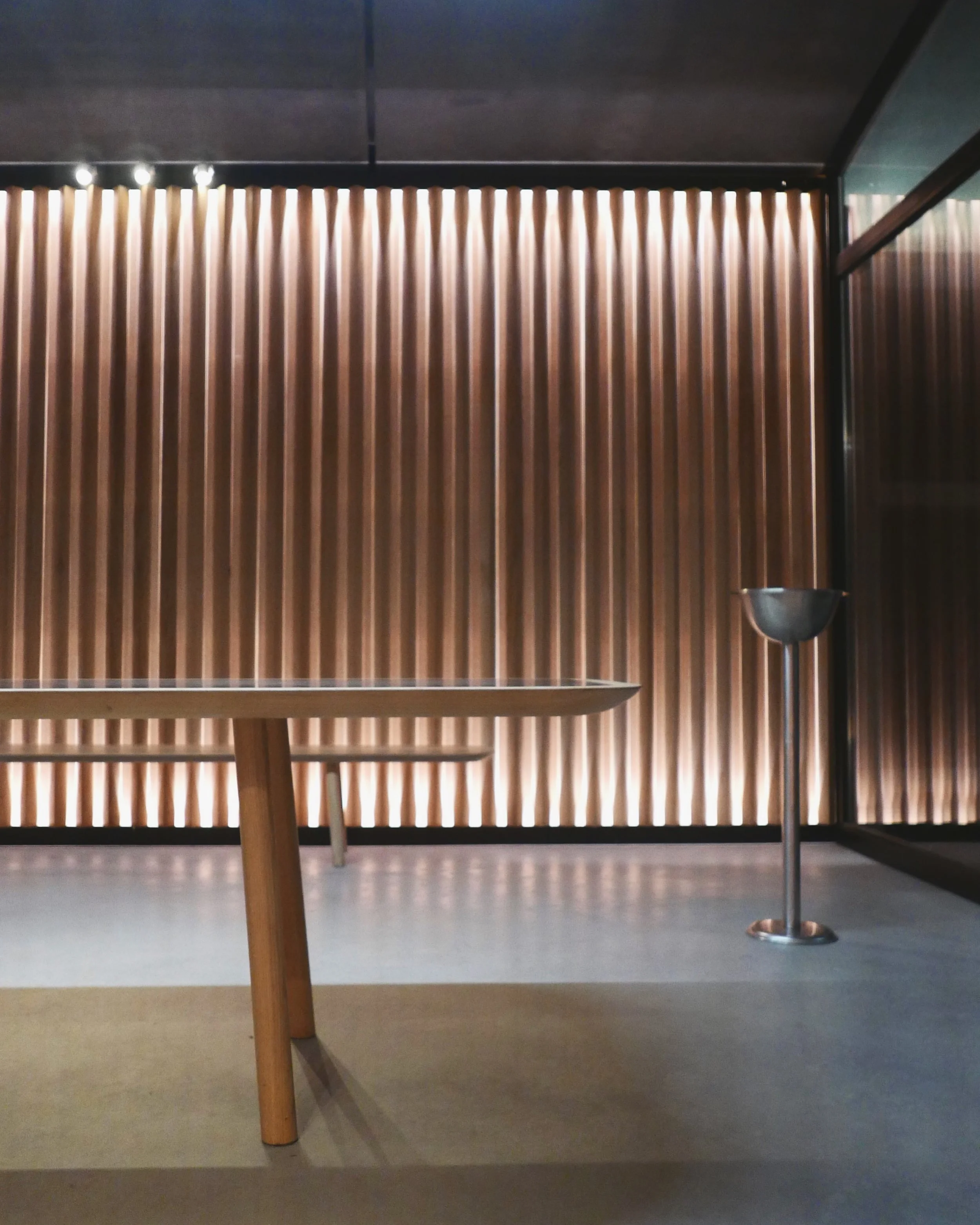Chateau Margaux, Terrior in Architecture
“You will visit on the 13 of March at 11:00am, we will give you a tour of the wine-making facilities, and you will taste the Pavillon Rouge.” I responded, “Okay!”
The staff at Chateau Margaux are as no-nonsense as the rest of the people I encountered during my stay in Bordeaux. The estate typically doesn’t allow visitors without ample notice, but when I reached out and asked them if I could come by and visit their new set of buildings by Norman Foster, their response was swift and concise. I rambled up to the historic house and grounds in a rented Fiat 500, where I was met by Emilie, my guide.
The Chateau itself is a private residence, built in 1812.
I was lucky enough to visit on one of the days they were steaming the barrels before the next mixing. The air was thick and steamy and smelled like my grandma’s house.
A place like Chateau Margaux is super special. When an estate has been the home to a wine cultivation business for 900 years, you’re bound to get a mix of architectural styles. The original structures are long gone, but the remaining Chateau and outbuildings were built over a span of several hundred years. The most recent buildings were designed by Foster + Partners and completed in 2015. Although mostly hyper-contemporary and literally underground, the visible parts of the building are designed to be a respectful beacon of modernity and innovative wine-making while drawing inspiration for its form and materiality from the existing lands and buildings.
The new building fits seamlessly into the compound, due mostly to the shape of the roof and the centuries-old shingles.
As important as a terroir is in the making of wine, it equally important in design, at least in my opinion.
When designing a structure for a location, the use of vernacular materials and cultural architectural cues as a base for the design is incredibly important. The soil and stones and geography of a region has a profound on affect on the outcome of the process of creating wine. Similarly, a designer can create a building that is not only new and modern, but respectful to the environment and community that it serves if it takes cues from its existing neighbor buildings and local materials. In the case of this building, that’s done by match the roof pitch and the materials used to shingle the roof to the surrounding buildings. Even though there’s a two-hundred-year difference between when the original structures were built and Foster finishing this one, the co-exist in a lovely, harmonic way.
The white columns that support the roof are inspired by a row of trees that welcome visitors along the long driveway to the chateau.
After walking around this gorgeous building, my guide led me down a spiral staircase and into the private wine cellar of the Chateau’s inhabitants. Also designed by Foster, this space was designed with a lot more leeway. Since it was buried underground, it needed less consideration to the existing architectural styles. It kind of felt like if Apple sold wine. The room was 30’ high, 30’ wide, and a couple hundred feet long. There were over 30,000 bottles of wine in that room, and it’s here that I got to taste the Pavillon Rouge that I had been promised on the phone.
After Emilie returned from a room hidden behind a wooden slat wall with a single glass and a bottle of wine, I realized that I was both very lucky to be in this sacred temple of wine, and also very out of my depth. I had come to this estate to see a building, and now I was in this room that so many wine-smart people would love to be in about to try a coveted bottle of wine. The thing is, I don’t really know anything about wine besides what tastes good and what doesn’t.
Emilie poured me a generous glass of the wine, and slid it across the gorgeous maple table that Foster had designed for the space. She watched and waited for me to taste it, so I swirled it around the glass and stared at it and tried to come up with something intelligent to say. I drank it, and I liked it.
I’m sure she could see the apology in my eyes when I looked up and made eye contact with her.
“Yum! It’s super good,” I said, seeking a validation that I wouldn’t get.
Unsmiling, Emilie responded, “Yes,” and lead me back up the spiral staircase and sent me on my way.



